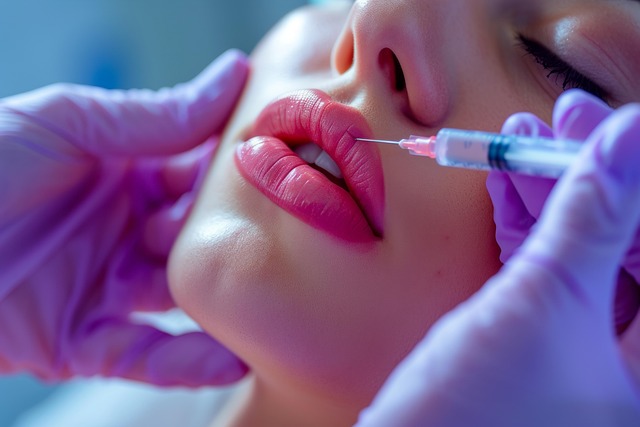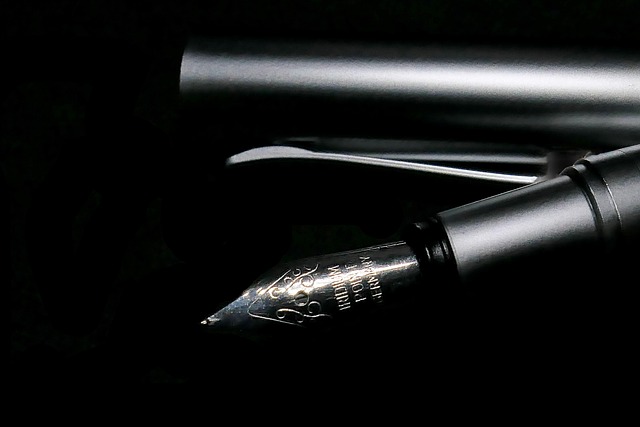In pursuit of youthful skin, non-invasive wrinkle reduction techniques like Botox and dermal fillers are popular choices for early intervention. Botox, a neurotoxin, relaxes muscle activity to prevent dynamic wrinkles, ideal for expression lines. Dermal fillers, using hyaluronic acid or collagen, instantly fill deep wrinkles by adding volume, suitable for quicker results or severe collagen/elastin loss. Both offer safe and effective anti-aging solutions tailored to individual needs, with Botox focusing on preventing new wrinkle formation and dermal fillers enhancing skin texture by plumping up depressed areas. The choice between them depends on personal preferences, budget, and specific skin concerns, emphasizing the importance of professional consultation for optimal results.
“Unveil the secrets to achieving youthful skin with our comprehensive guide to early wrinkle reduction using Botox. Discover how this powerful tool has revolutionized skincare, offering a non-invasive approach to minimizing fine lines and wrinkles before they become prominent.
Explore effective strategies, understand the science behind Botox’s action, and learn key differences when comparing it to dermal fillers. Make an informed decision with our safety and effectiveness insights, and choose the ideal treatment plan to combat aging signs.”
Understanding Early Wrinkle Reduction Strategies

In the pursuit of youthful skin, understanding early wrinkle reduction strategies is paramount. While many turn to cosmetic procedures, the focus here is on non-invasive methods that can prevent and minimize fine lines and wrinkles before they become pronounced. One popular option is Botox, a neurotoxin used to relax muscles responsible for causing dynamic wrinkles. It’s particularly effective in treating expression lines around the eyes and forehead. On the other hand, dermal fillers offer another approach by plumping and filling in deep wrinkles and creases, providing immediate results.
When considering Botox vs dermal fillers for early wrinkle reduction, it’s essential to recognize their distinct advantages and applications. Botox is ideal for preventing future wrinkle formation by paralyzing muscles that contribute to dynamic lines. Dermal fillers, however, provide a more immediate solution by adding volume to the skin, making them suitable for those seeking quicker results or addressing deeper wrinkles caused by loss of collagen and elastin. Both treatments offer safe, effective ways to combat aging signs, catering to different needs and preferences.
Unveiling the Role of Botox in Skincare

Botox has emerged as a game-changer in the skincare industry, offering a non-invasive approach to wrinkle reduction that’s gaining immense popularity. Unlike dermal fillers, which plump and fill in deep wrinkles, Botox works by relaxing specific muscle groups responsible for causing dynamic lines on the face, such as frown lines, crow’s feet, and forehead wrinkles.
This protein, derived from bacteria called Clostridium botulinum, is injected into targeted areas with fine needles. The result? A smoother complexion and a significant decrease in the appearance of fine lines and wrinkles. What sets Botox apart from dermal fillers is its ability to prevent the formation of new wrinkles by temporarily paralyzing the muscles that cause them, making it an effective treatment for both static and dynamic wrinkles.
How Does Botox Work for Wrinkle Minimization?

Botox, a popular and effective treatment for wrinkle reduction, works by relaxing specific muscles that are responsible for causing dynamic wrinkles. Unlike dermal fillers that add volume to the skin, Botox targets the underlying cause of wrinkles—muscle activity. When injected into targeted areas like the forehead, eye circles, or frown lines, Botox blocks nerve signals to prevent muscle contractions. This prevents the repeated pulling and tugging on the skin, which over time leads to deeper static wrinkles.
In comparison to dermal fillers, which provide instant results by plumping up the skin, Botox offers a more subtle yet long-lasting effect. While dermal fillers can be effective for moderate to severe wrinkles, Botox is often preferred for fine lines and early signs of aging, providing a natural-looking enhancement without altering the skin’s overall texture.
Botox vs Dermal Fillers: Key Differences

Botox and dermal fillers are both popular non-surgical cosmetic procedures, but they work in different ways and cater to distinct needs. The key differences lie in their mechanisms and effects on the skin’s appearance. Botox, a protein derived from bacteria, temporarily paralyzes muscles by blocking nerve signals, which smooths out dynamic wrinkles caused by facial expressions. This makes it ideal for treating expression lines around the eyes, forehead, and mouth. On the other hand, dermal fillers are made of hyaluronic acid or collagen, which are naturally present in our skin. They add volume to specific areas, plumping up wrinkles and enhancing facial contours. Dermal fillers are effective for deeper, static wrinkles, providing a more immediate result than Botox. The choice between them depends on individual needs, the type and depth of wrinkles, and desired outcomes.
Safety and Effectiveness Considerations

When considering early wrinkle reduction, it’s essential to weigh the safety and effectiveness of various treatments, particularly when comparing Botox to dermal fillers. Both procedures have their merits, but they target different aspects of skin aging. Botox, a neurotoxin, works by temporarily paralyzing muscle activity, reducing dynamic wrinkles caused by expressions like frowning or squinting. This makes it ideal for fine lines and crow’s feet. On the other hand, dermal fillers enhance skin texture by injecting hyaluronic acid or collagen into deep facial planes, plumping and lifting the skin to reduce deeper static wrinkles.
While both Botox and dermal fillers are generally safe when administered by qualified professionals, there are subtle differences in their side effects and duration of results. Botox typically takes a few days to take effect and lasts for several months, requiring repeated treatments for sustained results. Fillers, in contrast, provide immediate results and can last from six months to a year or more, but they may carry a slightly higher risk of temporary swelling, bruising, or asymmetry. The choice between the two depends on individual preferences, budget, and specific concerns about skin aging.
Choosing the Right Treatment Plan

When considering early wrinkle reduction, it’s crucial to understand that every individual’s skin is unique. A tailored treatment plan is essential for achieving optimal results. One key decision involves choosing between Botox and dermal fillers—two popular and effective anti-aging treatments. Botox excels in relaxing muscles to prevent dynamic wrinkles from forming, making it ideal for fine lines around the eyes and mouth. Dermal fillers, on the other hand, add volume and enhance facial contours by plumping up depressed areas, such as deep frown lines or hollow cheeks.
The right treatment plan depends on the specific concerns and skin type. For subtle improvements and preventing early wrinkles, Botox may be the better choice. However, for more pronounced volume loss or significant facial asymmetry, dermal fillers can provide immediate and noticeable enhancements. Both options offer safe and effective ways to combat aging signs, so consulting with a qualified dermatologist is essential to determine the best course of action.
